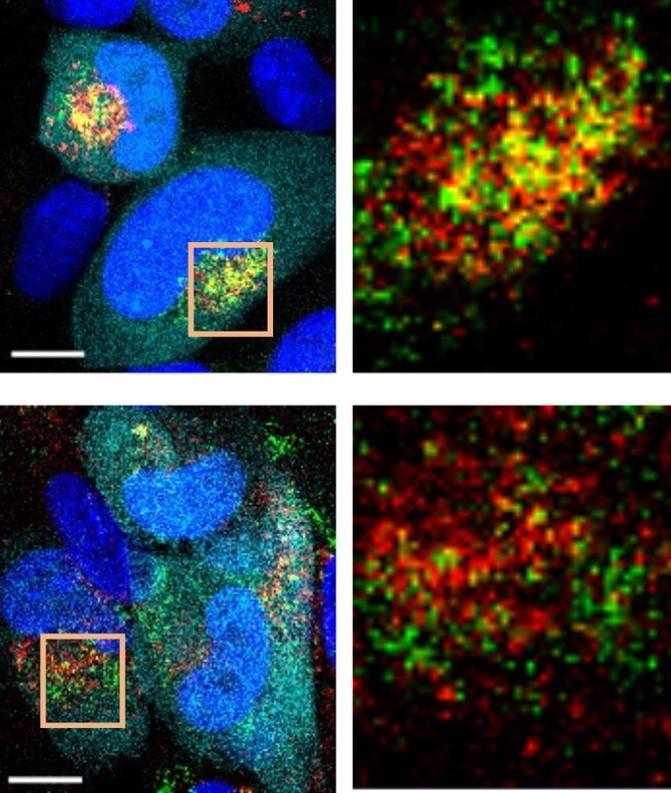
Human cytomegalovirus (HCMV) is a herpervirus which persistently infects over 60% of people worldwide. It is an important human pathogen and leading cause of congenital disease, affecting ~1/100 pregnancies, where it can cause a spectrum of disease including sensorineural deafness, intellectual disability, and microcephaly. However, only four anti-HCMV drugs have been approved, all with significant toxicity and problematic drug resistance. As a virus that persists lifelong, and that has co-evolved with its human host over millions of years, HCMV is regarded as a master cellular regulator, systemically modulating multiple processes critical to infection.
In this new paper from the Weekes lab, a quantitative proteomic analysis of HCMV infection was combined with a database of proteins involved in vacuolar acidification, revealing Dmx-like protein-1 (DMXL1) as the only protein that acidifies vacuoles yet is degraded by HCMV. Systematic comparison of viral deletion mutants revealed the uncharacterized 7 kDa US33A protein as necessary and sufficient for DMXL1 degradation, which occurs via recruitment of the E3 ubiquitin ligase Kip1 ubiquitination-promoting complex (KPC). US33A-mediated DMXL1 degradation inhibits lysosome acidification and autophagic cargo degradation. Formation of the virion assembly compartment, which requires lysosomes, occured significantly later with US33A-expressing virus infection, with reduced viral replication.
These data thus identify a viral strategy for cellular remodelling, with the potential to employ US33A in therapies for viral infection or rheumatic conditions, in which inhibition of lysosome acidification can attenuate disease.

